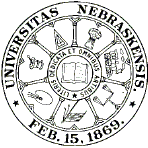
University Studies (University of Nebraska) (1888–1984)
Date of this Version
1978
Citation
1978 by the Board of Regents of the University of Nebraska
Abstract
"CITIZENSHIP IN THIS NATION, as you know, does not mean the possession of civil rights merely-as it does outside Indian Territory. The right of citizenship in this Nation means ... the right to erect residences and make farms on land bought and paid for by the Nation .... It means the right to materials and benefits which elsewhere must be purchased by the citizen himself." So spoke D. W. Bushyhead, Principal Chief of the Cherokee Nation, at Tahlequah, Indian Territory, the Cherokee capital, in 1883. He added that all citizens and their posterity expected to enjoy these benefits without limitation "except that all share equally, and that no transfer of the common right shall be made without the common consent."l He was expressing the aboriginal American communism which more than anything else distinguished the occupance, or human geography, of the Five Civilized Tribes from that of other parts of the American frontier. The new land had been acquired in exchange for eastern land, and the Cherokee government and schools were supported primarily from the proceeds of land, east and west, disposed of to the federal government and to other Indians. The thesis of this study is the making of a portion of Oklahoma, the Cherokee country, under Cherokee control. Cherokee culture, although markedly changed by contacts with whites, was distinguished by a basic attitude toward the land-that it belonged to all members of the tribe. The rights of all Cherokees in the resources of the land were recognized in laws adopted even before the Cherokees came west. Although outside forces and events were important, the distinctiveness of the Cherokee country on the American frontier resulted primarily from the aboriginal attitude toward the land. Cherokee customs and laws were fundamental in shaping the new land.
Contents: List of Tables / List of Figures / l. Introduction / 2. Cherokees in the New Land, Pre-Civil War / 3. Cherokee Country Rebuilt and Extended / 4. Cherokee Country at Allotment / 5. Conclusion / Notes / Acknowledgments

